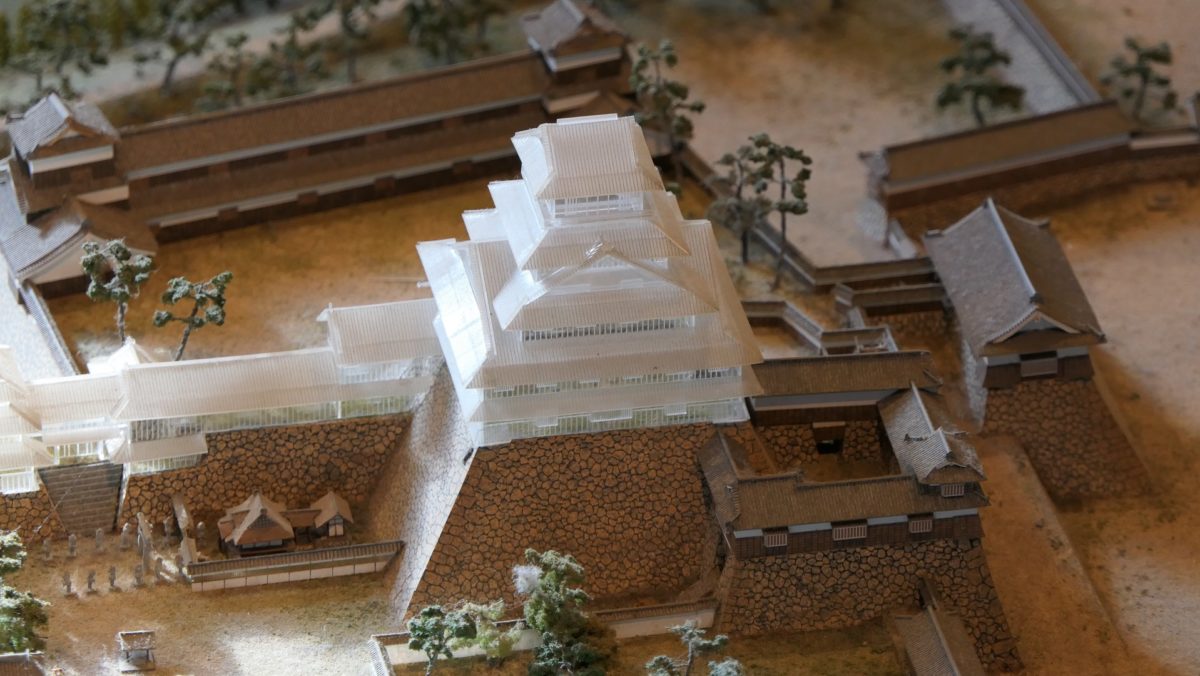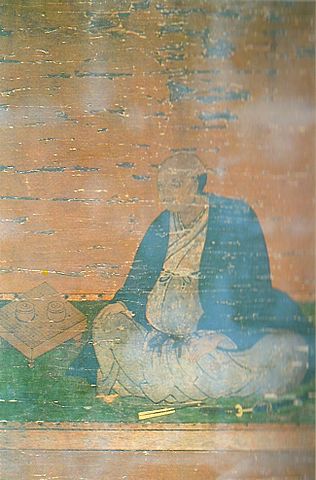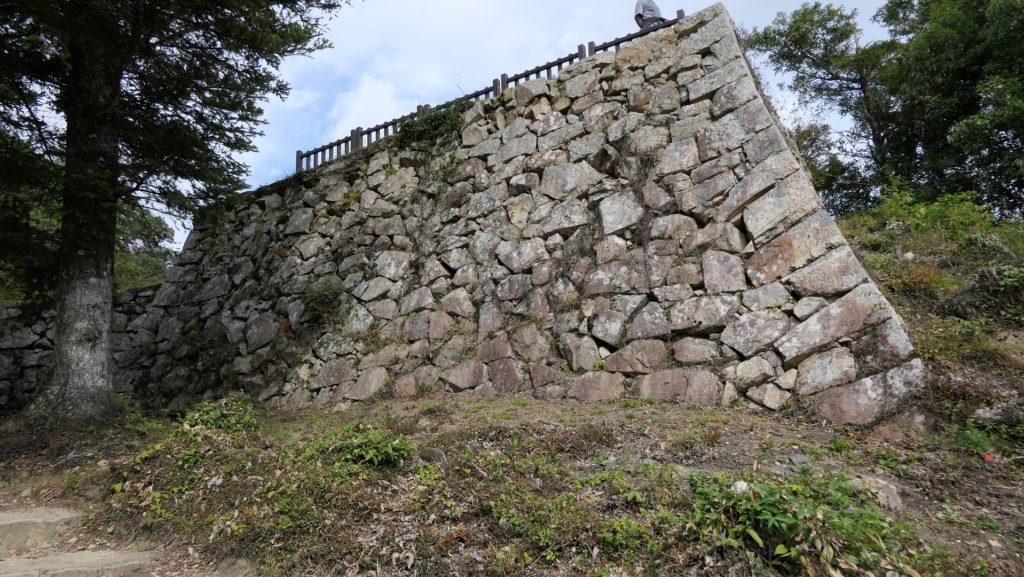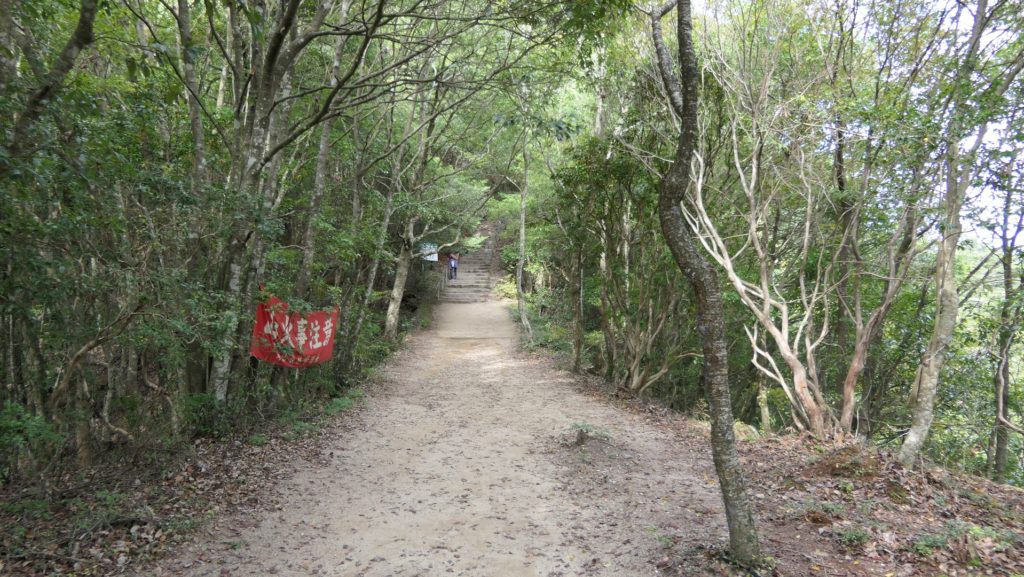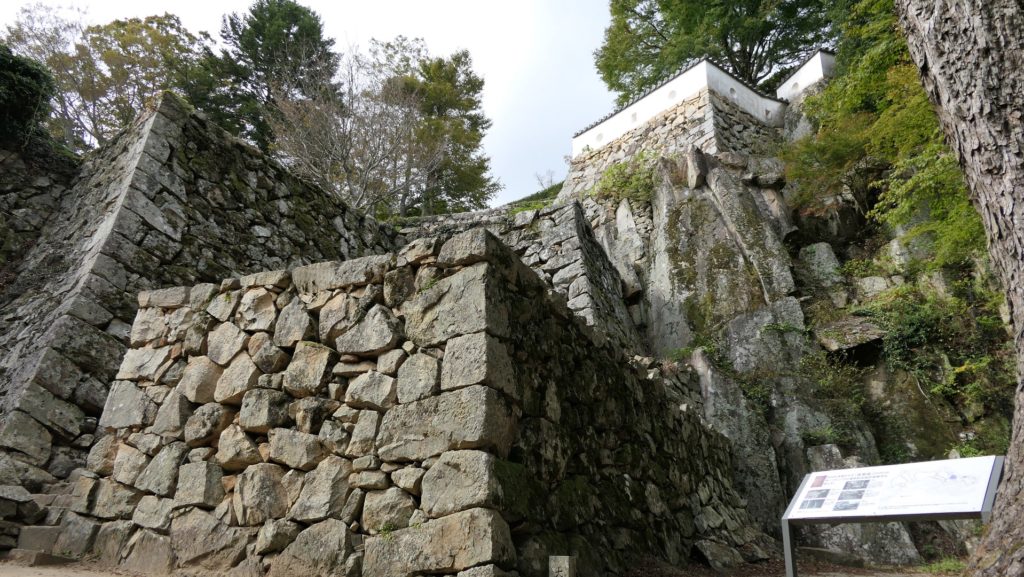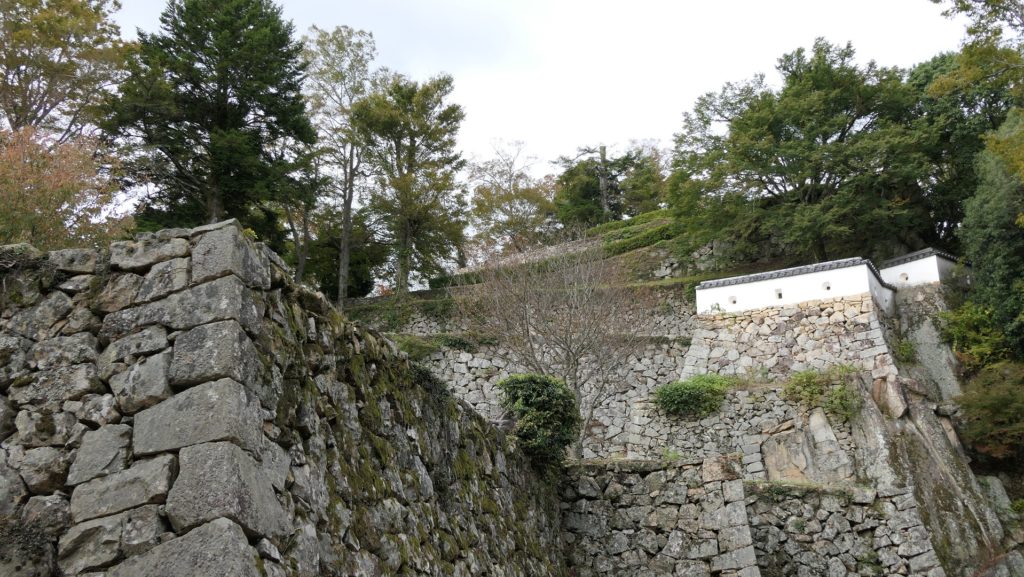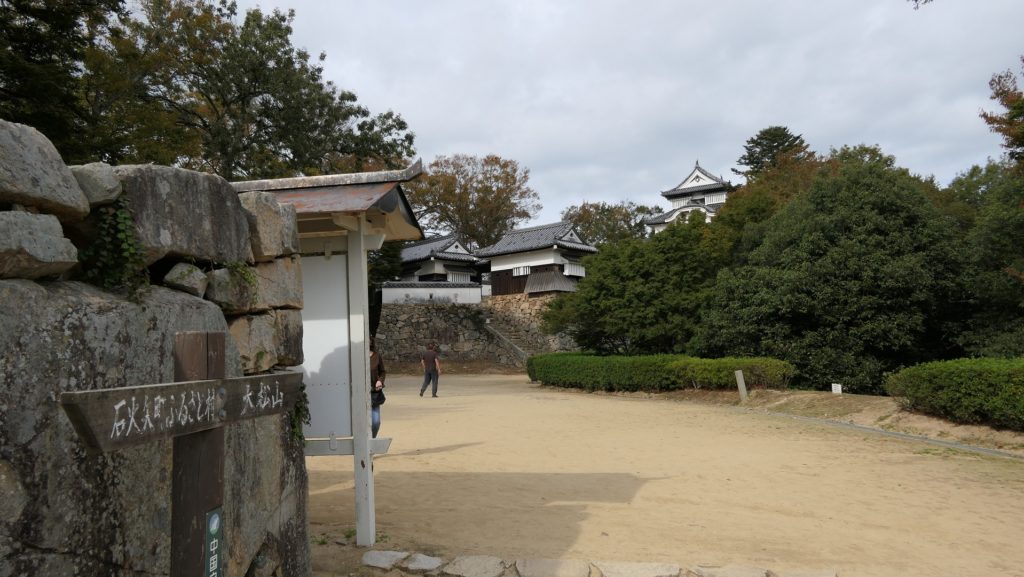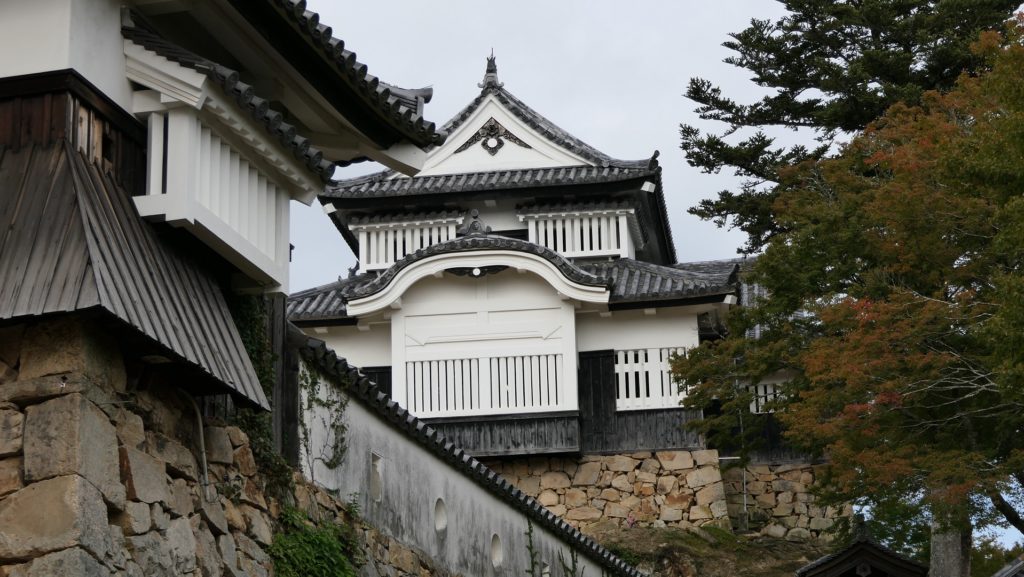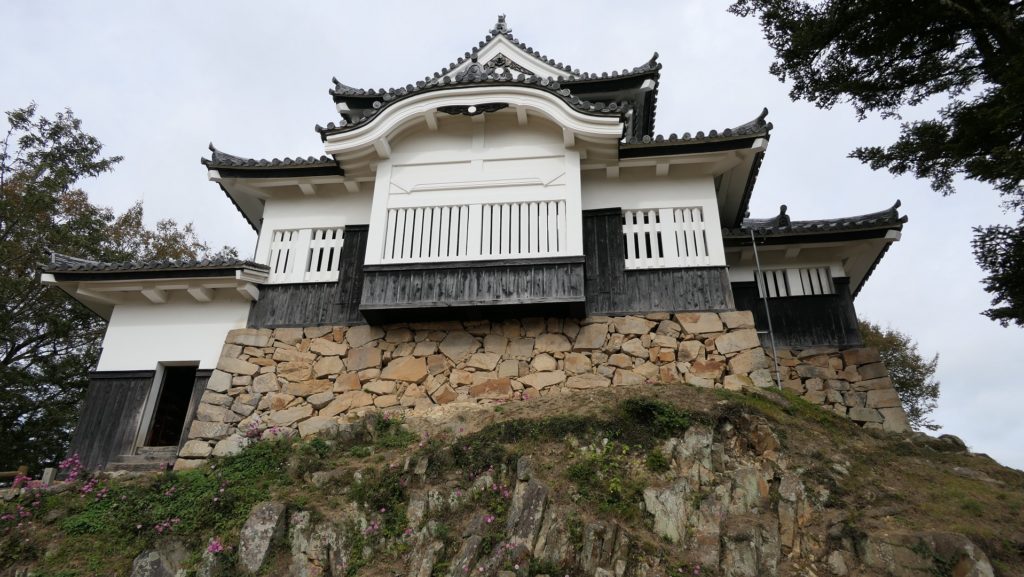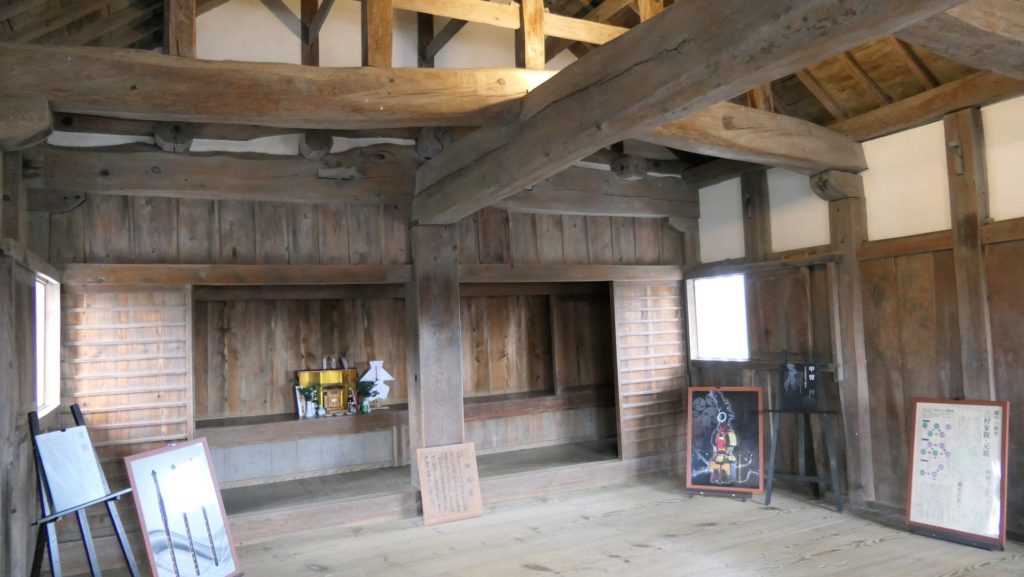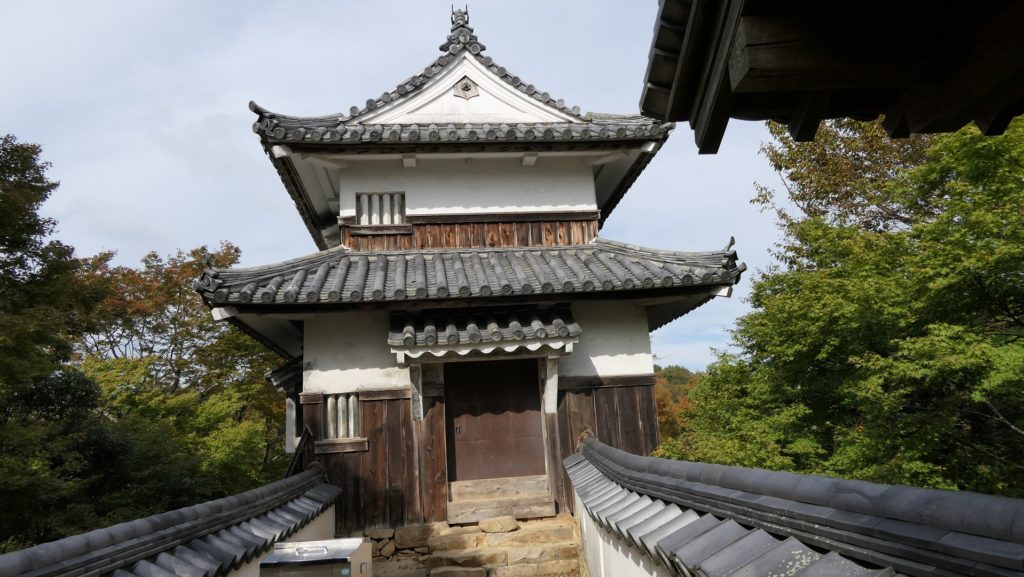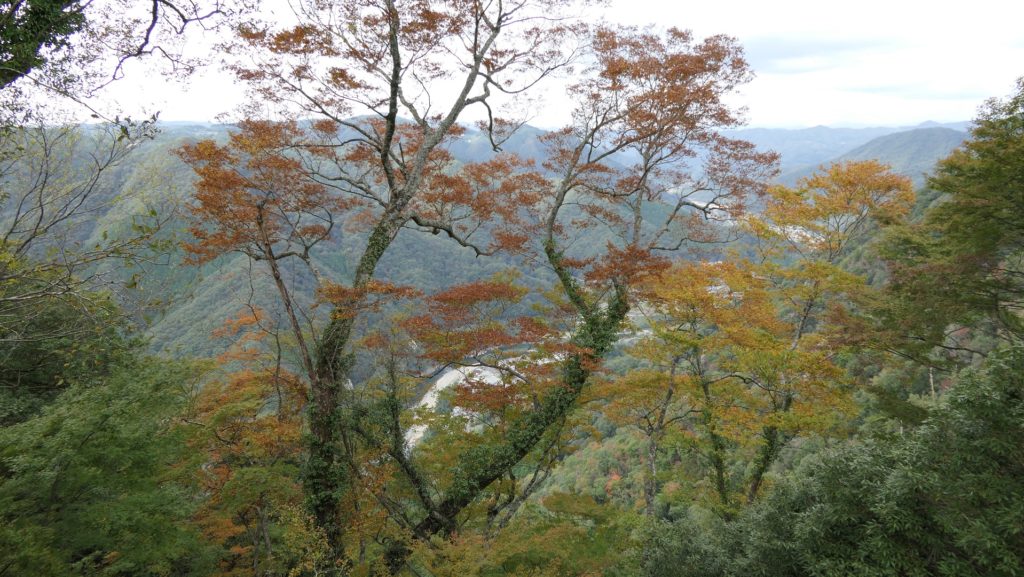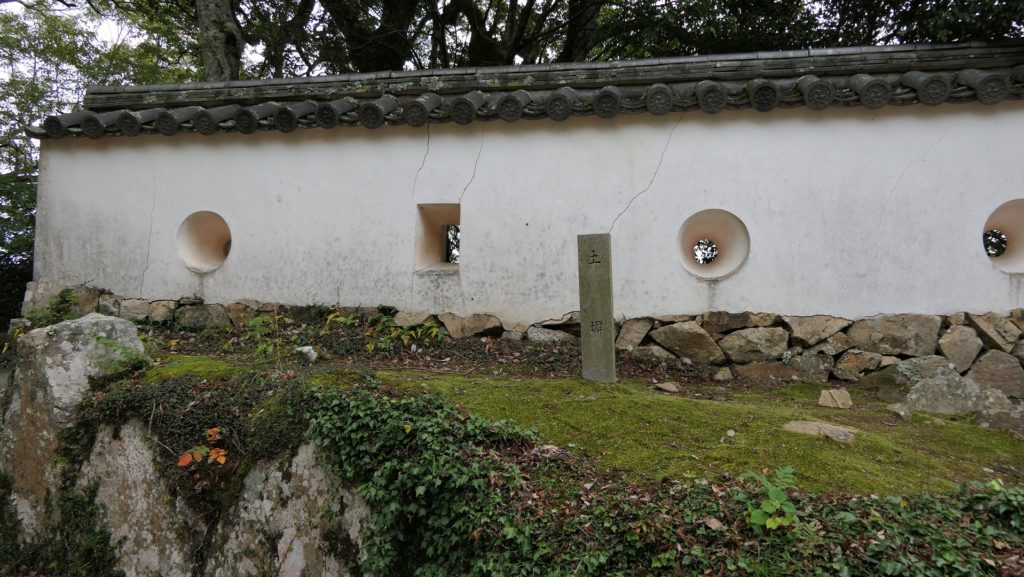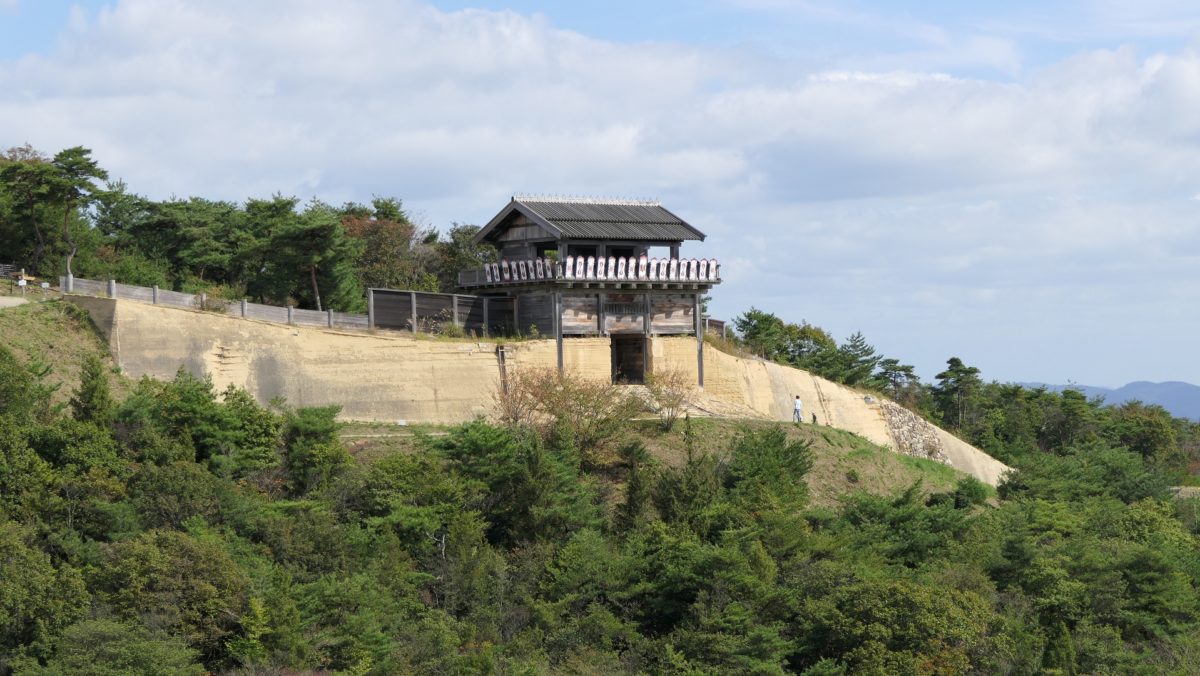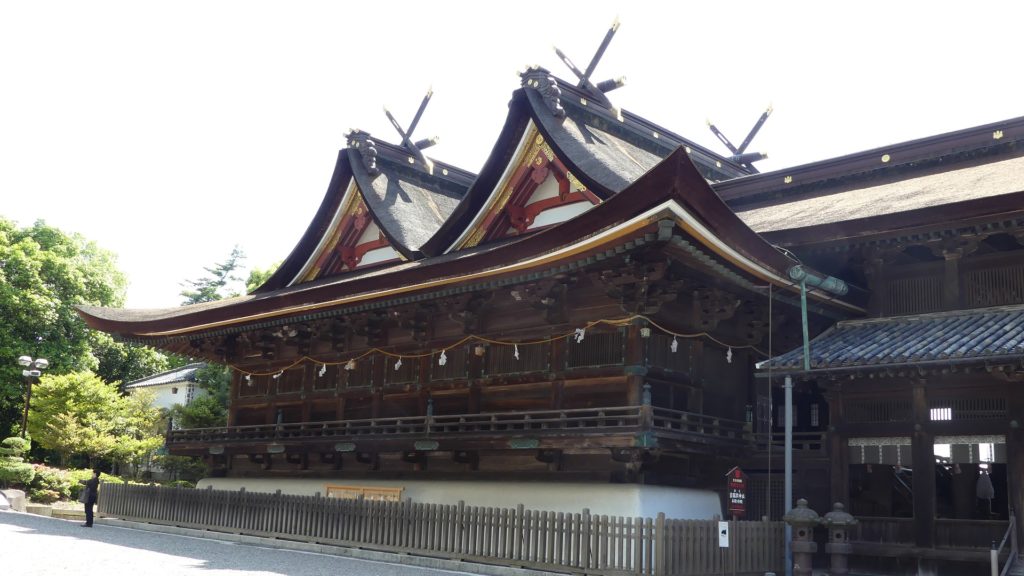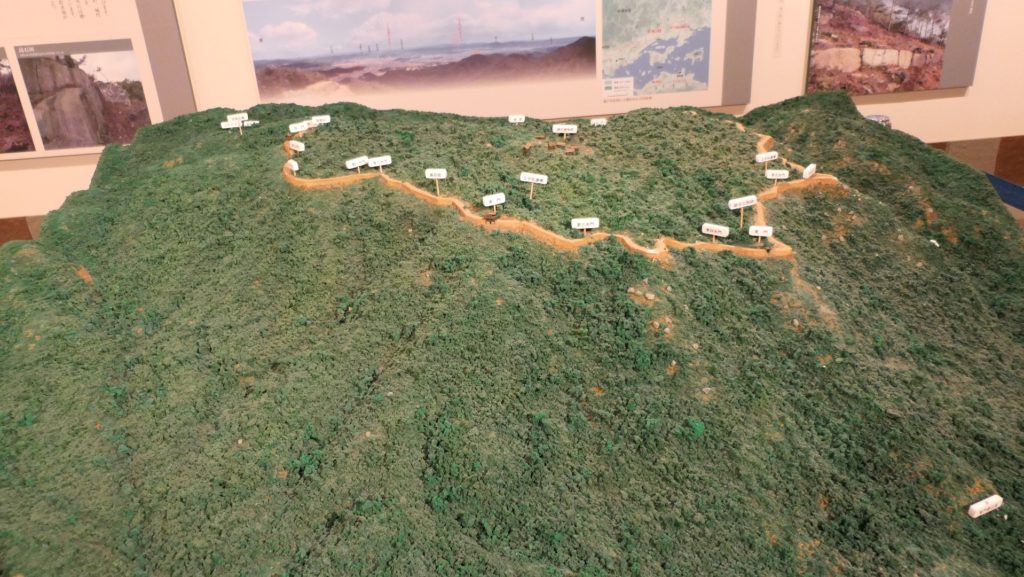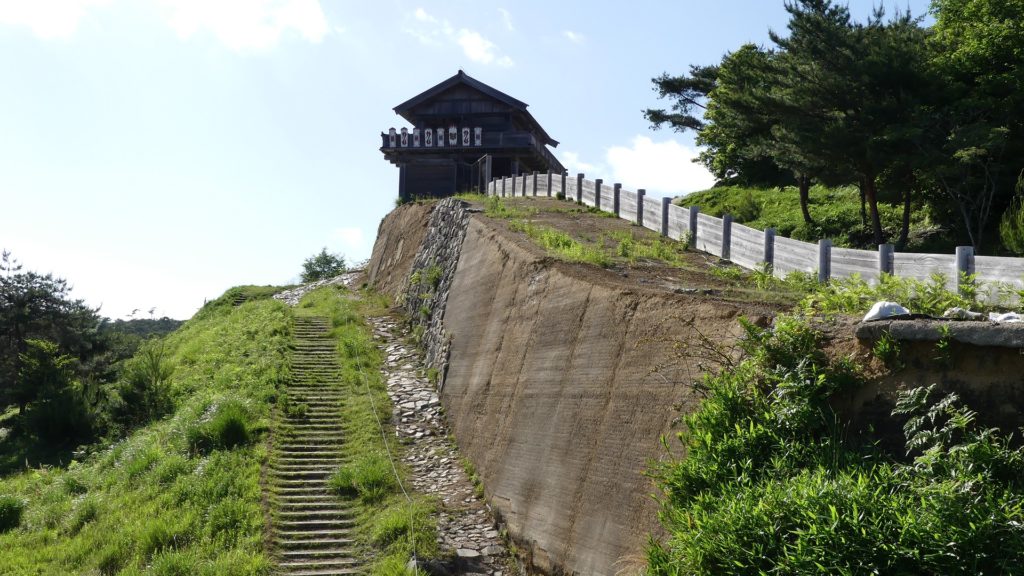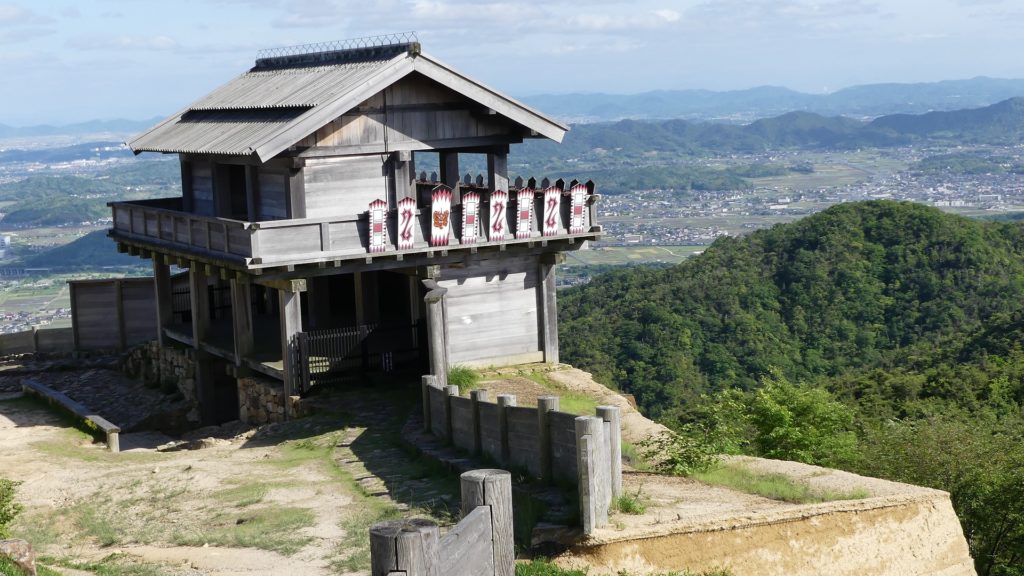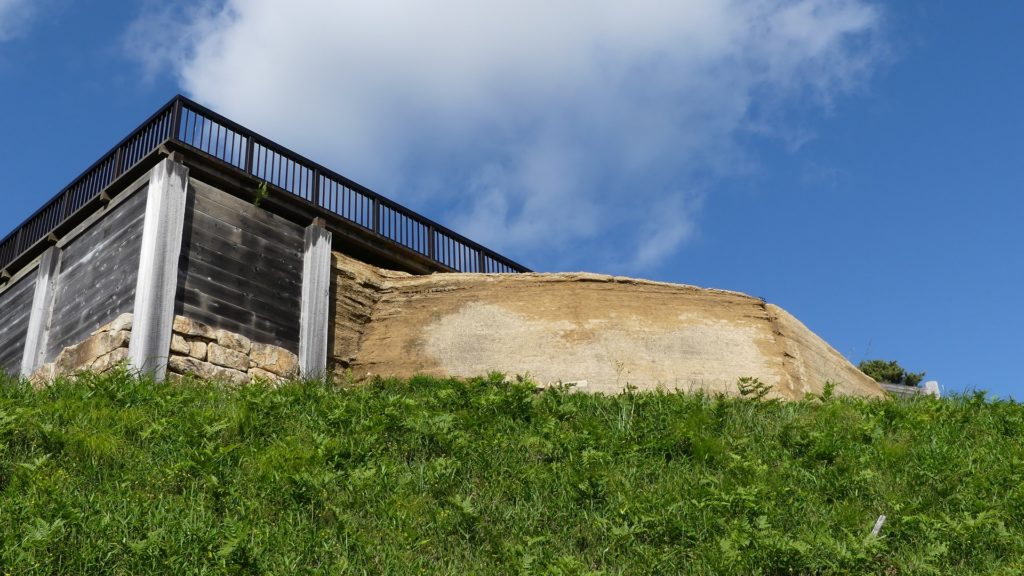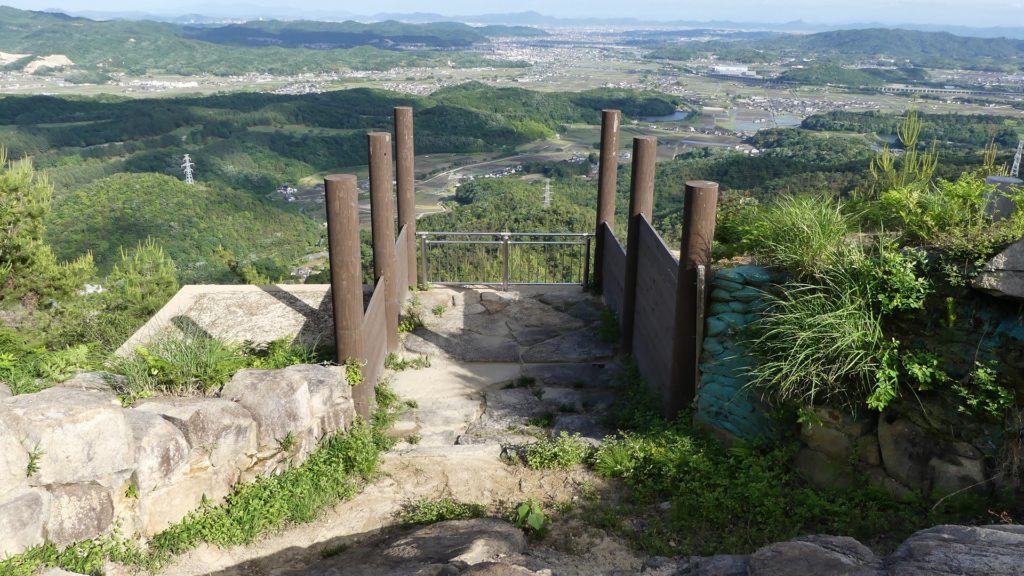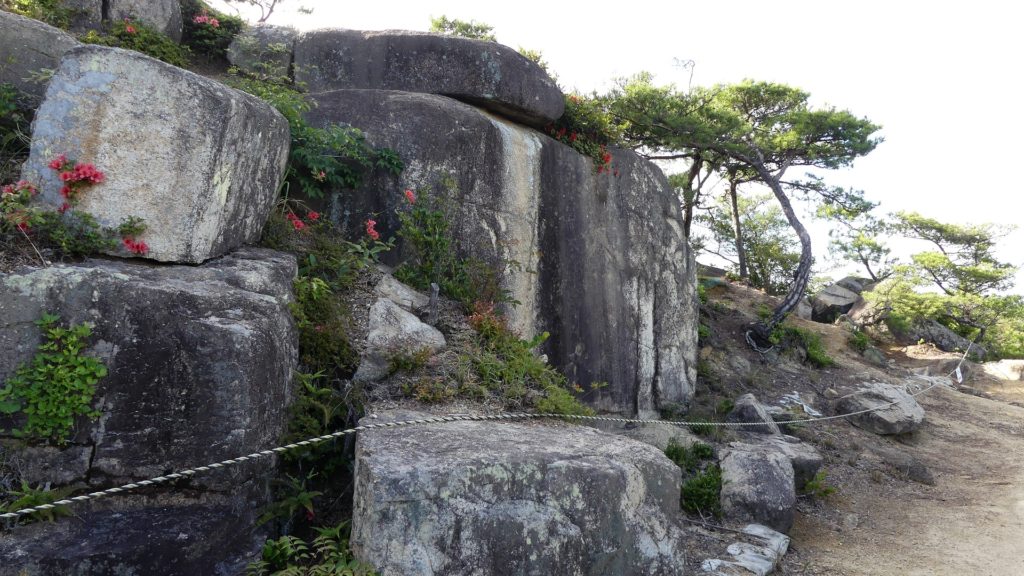立地と歴史~Location and History
古代から重要な地~Important place from Ancient times
城の位置と筑前国の範囲~The location of the castle and the range of Chikuzen Province福岡城は元々、現在の福岡市にあたる、赤坂山とその脇にあった草ヶ江入り江周辺の地域にありました。古代には、ここには鴻臚館という中国や朝鮮からの人々をもてなす迎賓館がありました。中世の鎌倉時代に、武士たちが元の襲来を撃退したとき、ここで戦いがありました。1600年黒田氏は、筑前国福岡藩52万3千石の石高を、徳川幕府により与えられました。彼らは当時福崎と呼ばれていたこの場所に新しい城を作ることにしました。
Fukuoka Castle was originally an area around a mountain called Akasaka-yama and an arm of the sea called Kusagae beside the mountain, in what is now Fukuoka City. In ancient times, there was a guest house called Kouro-kan to used to host people from China and Korea. In the Kamakura Era of the Middle Ages, when the warriors repelled the Mongol Invasion, they battled the enemy there. In 1600, the Kuroda clan was granted the Fukuoka Domain of Chikuzen Province with an earning of 523,000 koku in rice by the Tokugawa Shogunate. They decided to build a new castle in this area called Fukuzaki then.
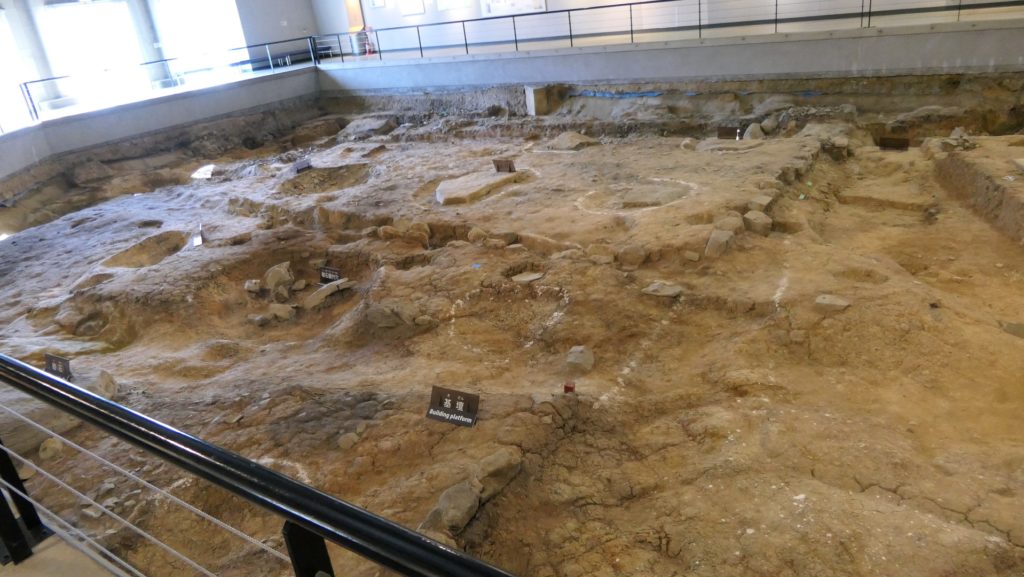

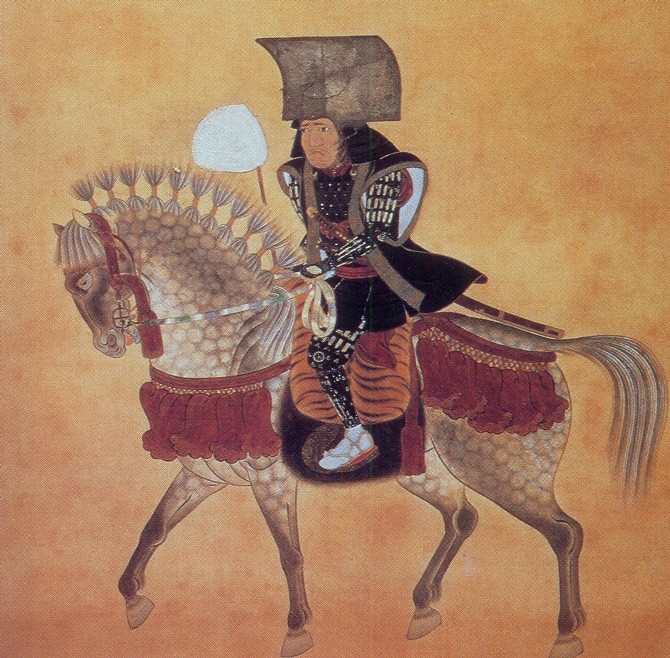
山と入り江を大改造~They reformed Mountain and Arm of Sea
彼らは山の形を整え、谷を埋め、本丸、二の丸、三の丸といった曲輪を南から北に向かって配置しました。また、山の部分を囲む内堀を、西側は草ヶ江入り江を利用することで、他の方角は掘削することで作り出し、城の東側にある那珂川と接続させました。
They reshaped the mountain and filled valleys, and set the Main Enclosure or “Honnmaru”, the Second Enclosure or “Ninomaru”, and the Third Enclosure or “Sannomaru” from south to north. They also created the inner water moat surrounding the mountain part by using the Kusagae arm of the sea as the western part, digging other direction parts, and connecting to the Naka River, the east of the castle.
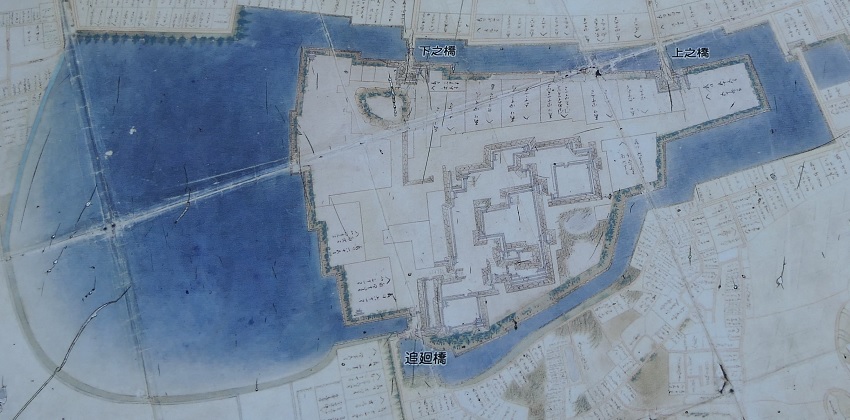
結果的にこの地域は、広大な要塞となりました。これが福岡城です。城の正面は北の方角の海に向いており、「下ノ橋大手門」「上ノ橋大手門」「赤坂門」という3つの大きな門がありました。本丸がある城の後方には「追廻橋」という裏門が1つあるだけでした。本丸だけでも20もの櫓が高く屈曲した石垣にそびえていました。
As a result, the area became a huge scale fortress called Fukuoka Castle. The front of the castle faced the sea in the north with three large gates called “Shimonohashi-Ote-mon”, “Kaminohashi-Ote-mon”, and “Akasaka-mon”. The back of the castle, where Honmaru was located, had only one back gate called “Oimawashi-bashi” bridge. Honmaru itself had as many as twenty turrets on high and curved stone walls.
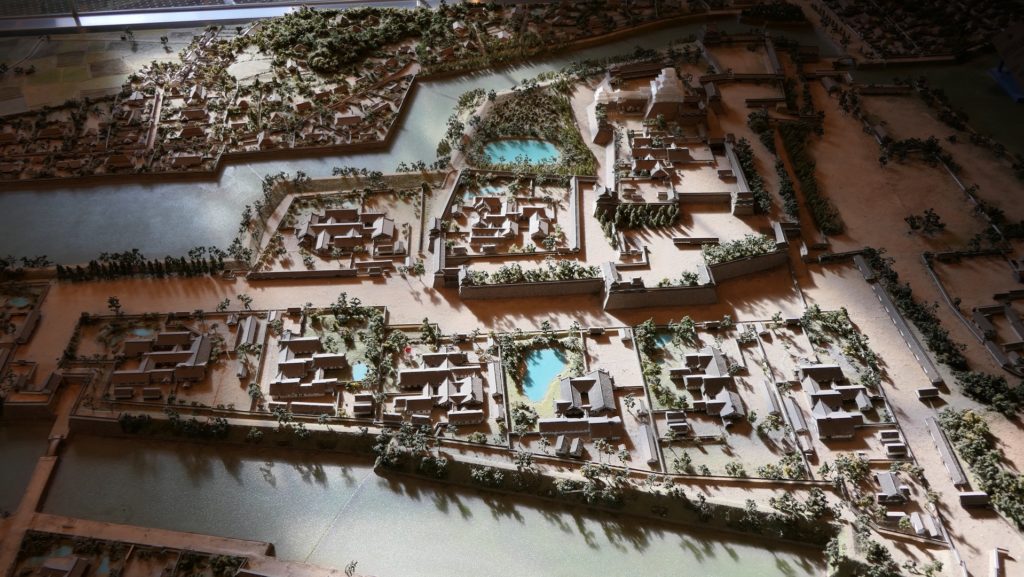
天守の謎~Mystery of Main Tower
この城に関して興味深いことは、天守があったかどうかです。石垣の天守台は確かにありました。しかし、遺物、文献、図面といった天守の証拠となるものは見つかっていません。ところが、歴史家の中には、天守はあったはずと言う人もいます。江戸時代初期のある大名の手紙に、黒田候は幕府がどう思うか心配なので、天守を壊すことにしたと書いてあるのです。実に興味をそそる記述です。
An interesting question regarding the castle is if it had a Main Tower (“Tenshu”) or not. It had the stone wall base for Tenshu, but there are no evidence of Tenshu such as relics, documents, and drawings. However, some historians say that the castle must have had Tenshu, as a letter in the early Edo Period written by another lord says Kuroda would destroy their Tenshu because they were afraid of what Tokugawa Shogunate might think. It’s very intriguing.
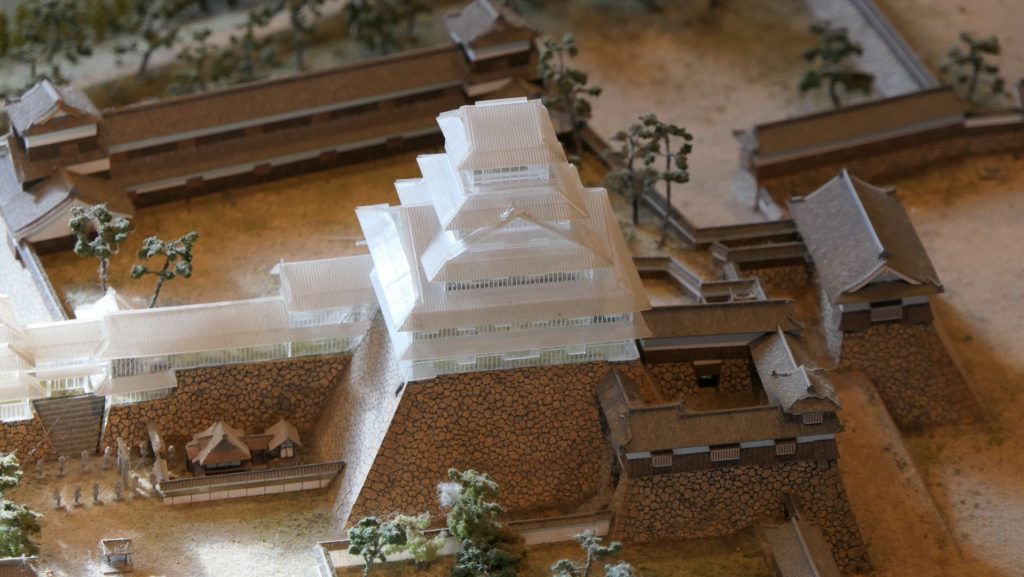
特徴~Features
城周辺の航空写真~The aerial photo of around the castle二つの公園~Two Parks
現在、福岡城跡は2つの公園に別れています。1つは舞鶴公園で、城の主要部分に当たります。もう1つは大濠公園で、もともとは草ヶ江入り江だったものが、大濠と呼ばれた城の内堀となった所です。ただ、大きな池のようにも見えます。それは、大昔は海の一部だったからなのです。
Now, the ruins of Fukuoka Castle are divided into two parks. One of them is Maiduru Park which was the primary part of the castle. The other one is Ohori Park which was originally Kusagae arm of the sea, then became an inner moat of the castle, called Large Moat or “Ohori”. Ohori Park still has the large moat, but it looks like a large pond. You can see that`s because it was part of the sea a long time ago.

舞鶴公園は、更に広々としています。多くの遺跡が散らばっています。城の北部にあった三の丸の3つの門のうち、下ノ橋大手門だけが現存しています。2階建ての櫓門であり、ほぼ元あった通りの姿となっています。この門は明治時代に一旦単層に改造されました。2000年に一部が火災に遭った後、現在あるように復元されました。
Maiduru Park is even more spacey, so a lot of ruins are disseminated. Only the Shimonohashi-Ote-mon Gate remains out of the three front gates at Sannomaru, the north part of the castle. It is a two-story turret gate which looks nearly like the original one. It was once modified to a one-story gate in the Meiji Era. After the gate partly burned in 2000, it was restored as it is today.


三の丸地区~Area of Third Enclosure
上ノ橋大手門跡の方から公園に入ると、大きな空き地があります。江戸時代、ここには三の丸の多くの居住や統治のための屋敷がありました。その後は、平和台球場のような近代施設が建設されました。1999年に球場が撤去された後発掘が行われ、城があった遥か前には迎賓館である鴻臚館があったことがわかりました。鴻臚館跡展示館では、発見された遺物が展示されています。また、福岡城むかし探訪館では福岡城の歴史を学ぶことができます。
If you enter in the park through the ruins of Kaminohashi-Ote-mon Gate, you can see a large vacant area. There were many halls for living and governance at Sannomau in the Edo Period. After that, modern facilities were built there, such as the Heiwadai Stadium. After the stadium was demolished in 1999, the Excavation team found out that there was an ancient guest house called Kouro-kan long before the castle. You can see the findings of the excavation in Kourokan Ruins Exhibition Hall, as well as the history of the castle in Fukuoka Castle Ruins Visitor Center.

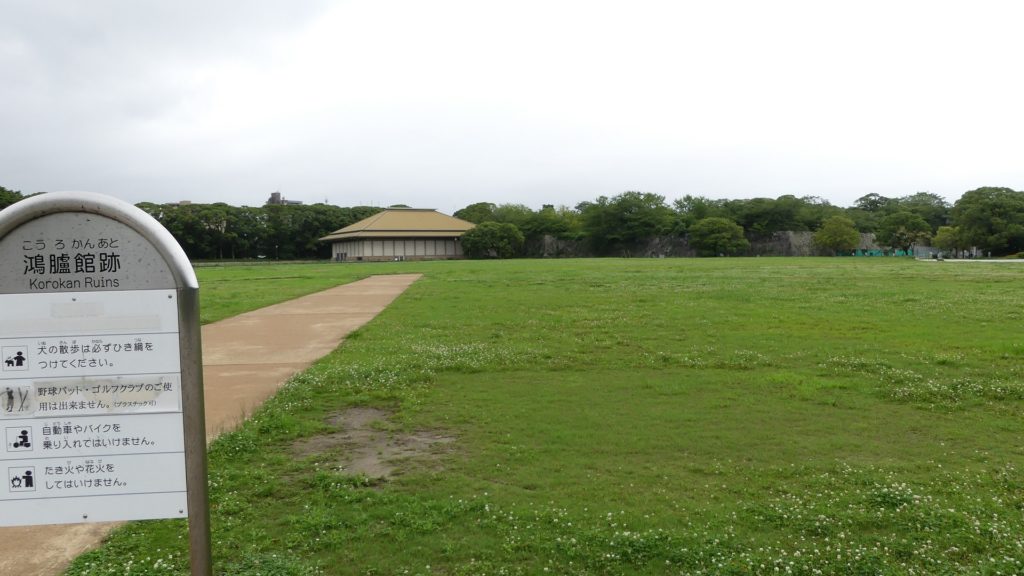

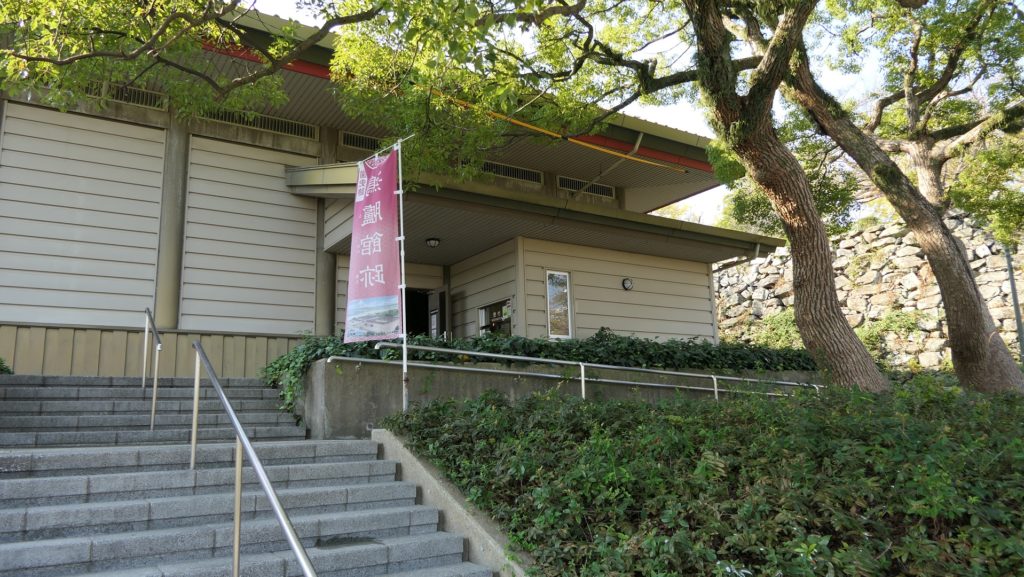

二の丸、本丸へ~To Second and Main Enclosures
城周辺の地図~The map around the castle二の丸と本丸へは、三の丸から登っていきます。二の丸は本丸を囲んでいます。二の丸に関しては、2階建てで50mの長さがある多門櫓が現存しています。この櫓は城の裏口にあり、現在も堅く守っているように見えます。1971年には重要文化財にも指定されました。
You can climb from Sannomaru to Ninomaru and Honmaru. Ninomaru is surrounding Honmaru. Regarding to Ninomaru, there is a two-story and over 50m long turret called “Tamon-Yagura” that remains in its original state. It was located at back entrance of the castle, so even now it looks very defensive. It was also designated as an Important Cultural Property in 1971.
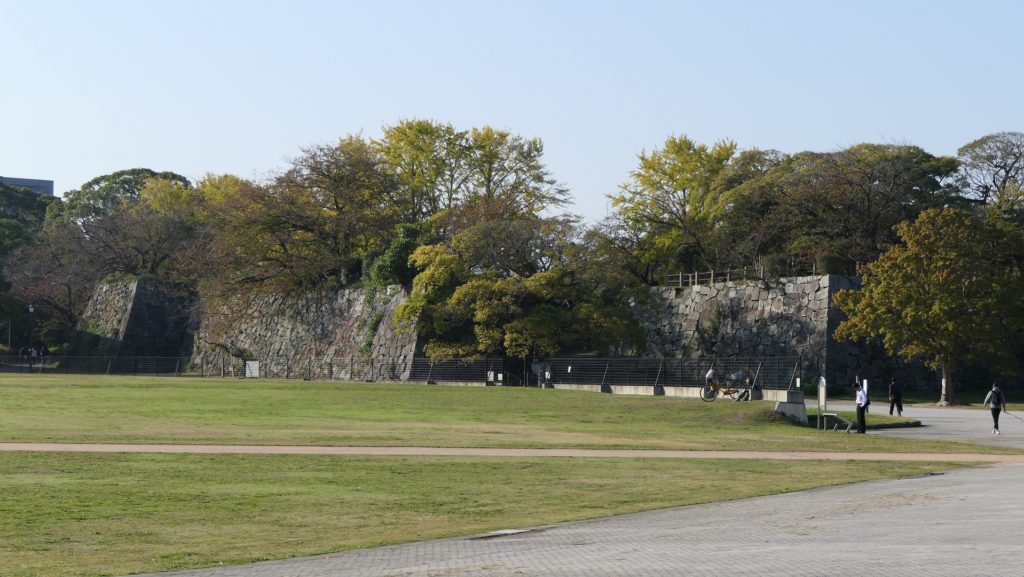
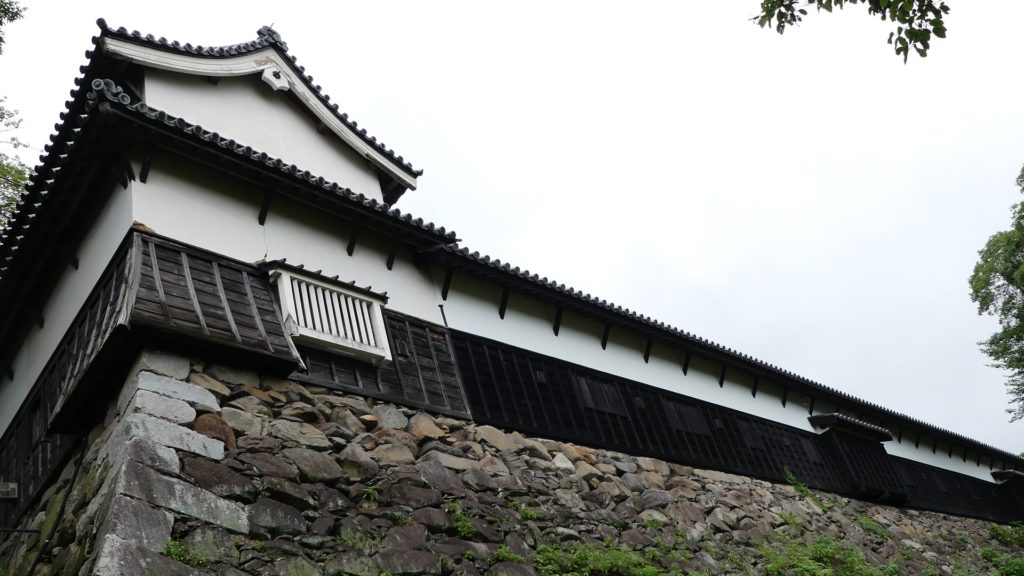
本丸は城のもっとも高い位置にあります。巨大な天守台に石垣が際立っています。前述した通り、研究者はこの石垣の上に天守があったのかどうか考察しています。ここからは福岡市一帯を見渡すことができます。祈念櫓は本丸で唯一残っている建物です。この櫓は一旦他の場所に移されましたが、1983年に元の場所に戻されました。
Honmaru was at the highest point of the castle. The large stone wall base for Tenshu is outstanding. Researchers wonder if the Tenshu was on the base, as I mentioned above. You can observe the whole area of Fukuoka City from there. Kinen Turret is the only remaining building at Honmaru. It was once moved to another, but returned to its original position in 1983.
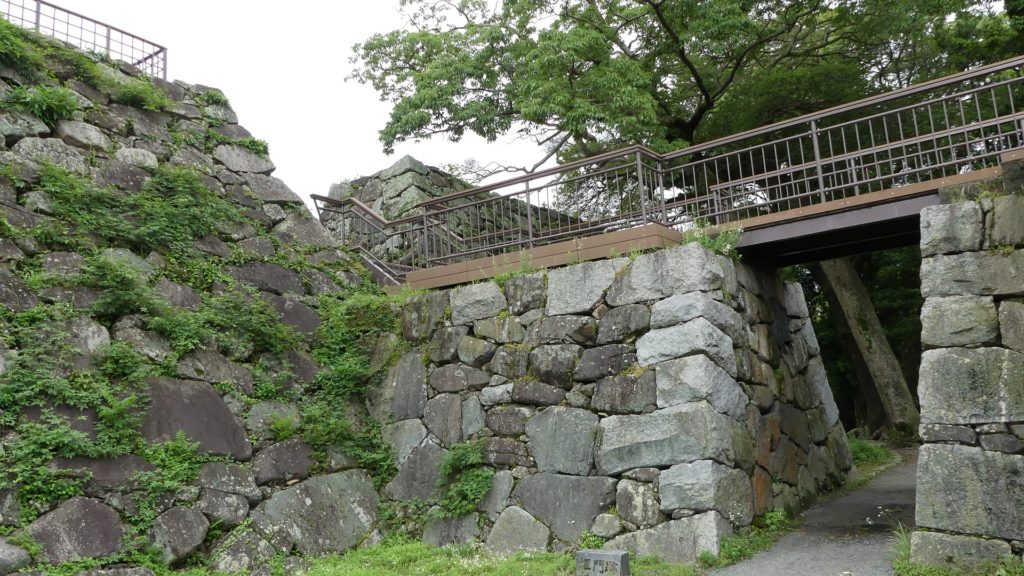

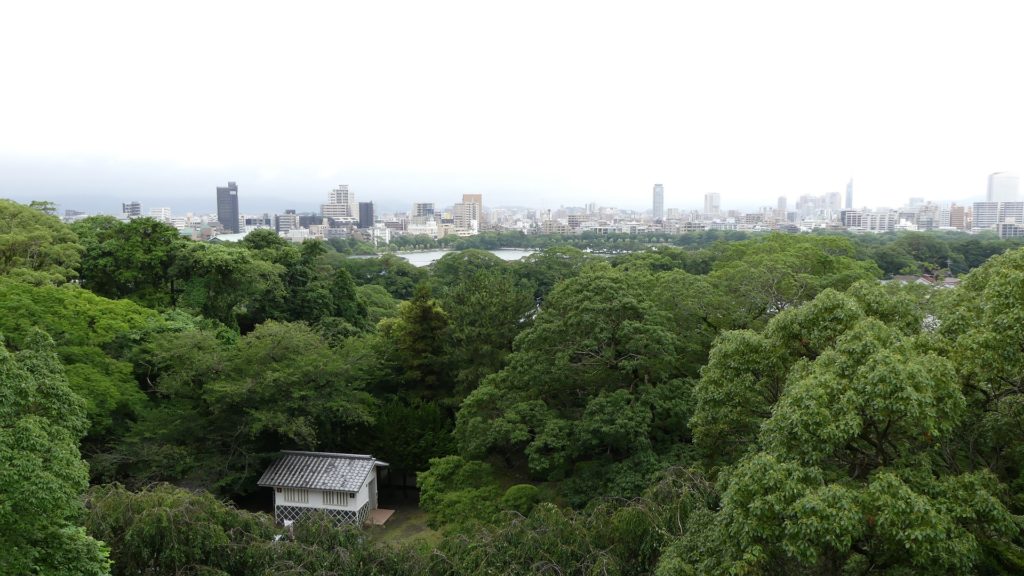

その後~Later History
黒田氏は、現在は福岡市として知られている城とその城下町を江戸時代末期まで統治しました。明治維新後、城のほとんどの建物は撤去されるか、近代施設に置き換えられました。第二次世界大戦前は軍の基地、戦後は平和台球場といった具合です。城跡は舞鶴公園と大濠公園となっています。最近、福岡市はこの2つの公園を合わせたセントラルパーク構想を発表しました。また、残っている文書を基に福岡城のいくつかの櫓を、発掘の成果を基に鴻臚館の建物を復元するとのことです。それには長い期間がかかります。
The Kuroda clan continued to govern Fukuoka Castle and the castle town, that are now known as Fukuoka city, until the end of the Edo Period. After the Meiji Restoration, most of the buildings in the castle were demolished or replaced with modern facilities like the Army base before World War II, or the Heiwadai Stadium after the war. The ruins of the castle have been turned into Maiduru Park and Ohori Park. Recently, Fukuoka City has announced that it will develop the Central Park, including the two existing parks. The city will also restore some of Fukuoka Castle’s turrets, based on the documents that remain as well as the buildings of Kouro-kan, based on the excavation’s findings. They expect the restoration will take a long time.
私の感想~My Impression
私は、福岡城には一時完成したか、建設中の天守があったのではないか、ただし幕府の権威を憚って計画的に自ら解体したのではないかと思っています。それが天守があった証拠が見つからない理由でしょう。また、最近の人たちはあまり福岡城跡を歴史公園として見てこなかったように思います。レジャー、運動、そしてオフィスビルとしての用途のためです。しかしながら、この城跡はまだまだ史跡として大きな潜在能力を持っています。今後城の建物が充実してきたら、また訪れてみようと思います。
I guess that Fukuoka Castle once sported a completed or under construction Main Tower, but Kuroda had to destroy it systematically by themselves considering the Shogunate’s authority. That’s why there is no evidence of the Main Tower.
I also think that recent people have not been interested in the ruins of Fukuoka Castle as a historical park. They think the parks are for leisure, exercise, or officials buildings. However, the ruins still have a great potential for a historic site. I will be waiting for some buildings to be renovated so I can visit them again.
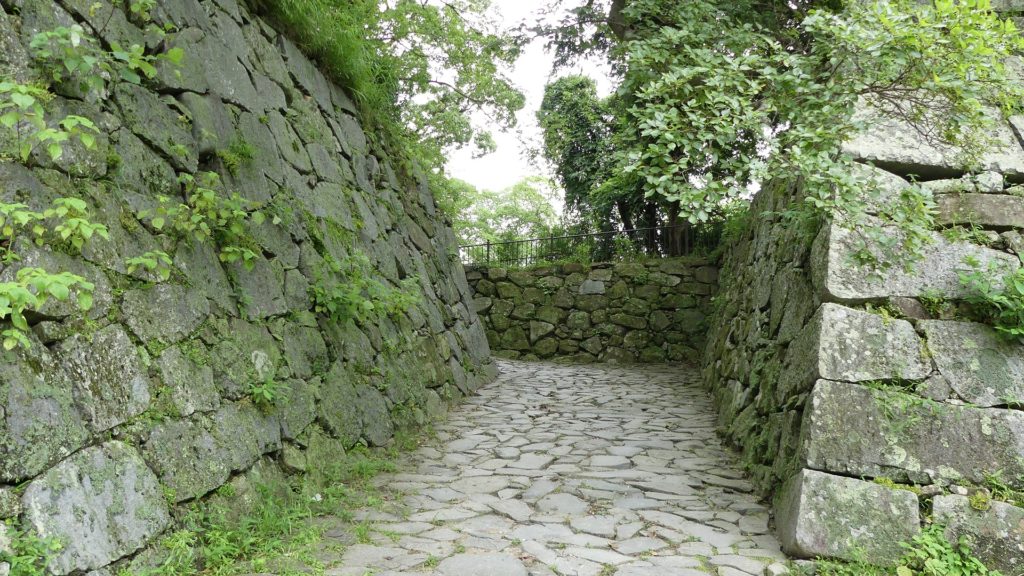
ここに行くには~How to get There
福岡市地下鉄空港線の赤坂駅または大濠公園駅から徒歩で10分以内です。
車の場合:都市高速の天神北または西公園ランプから約3kmのところです。舞鶴公園に駐車場があります。
It takes less than 10 minutes From Akasaka or Ohori-Koen station on Kuko line, Fukuoka City Subway to get there on foot.
If you want to go there by car: It is about 3 km away from the Tenjin-kita or Nishi-koen Ramp on Urban Expressway. Maiduru park offers a parking lot.
リンク、参考情報~Links and References
・福岡城むかし探訪館~Fukuoka Castle Ruins Visitor Center(Only Japanese?)
・「よみがえる日本の城20」学研(Japanese Book)
・福岡市「セントラルパーク構想」(Fukuoka City Official Document)

